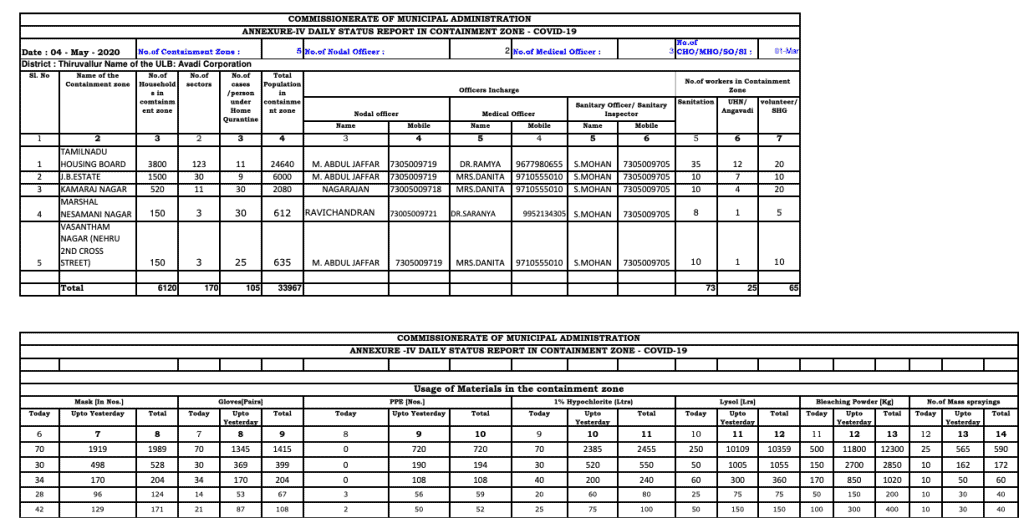“A young girl who tested positive for COVID-19 at Shanthi Niketan Colony of Madambakkam passed away,” — this is one of the messages that was circulated widely among residents in and around Tambaram in late April. The street had been cordoned off and police personnel was deployed. Citizens in the adjacent neighbourhoods stocked up on provisions and did not venture out, even to walk their dogs. Citizens in the cordoned locality had to live with not only the threat of the disease but also a kind of social stigma, with even shopkeepers requesting them not to visit their stores.
But when I recently asked the police personnel on duty about the case, he said, “A middle aged man had tested positive. However, he has been discharged too. He is in home quarantine now. There have been no deaths reported.”
The same statement was confirmed by Ganesan, Executive Officer of Madambakkam Town Panchayat as he said: “Rumours and fake news are spreading like wildfire. Citizens are requested to rely only on news from official sources.”
But what exactly are these official sources? The officer had no answer.
While citizens residing within the Greater Chennai Corporation (GCC) limits rely on bulletins from the civic body, there has been no such official source disseminating regular information in the suburban parts of the city. Ever since the pandemic hit the city, GCC has been active on social media platforms to publish the number of patients zone wise and the list of contained areas every day. GCC Commissioner G Prakash also goes live on social media platforms to speak about the importance of social distancing and other initiatives.
While GCC has been publishing the street and ward-wise data of COVID-19 patients, the suburban municipalities have only recently published a list of contained localities. The list is superficial and doesn’t include the street or ward wise data, detailed information containing total confirmed cases, the total recovered cases, deceased and total active cases.
Despite acknowledging the implications of not sharing official information, several administrative bodies functioning under the Commissionerate of Municipal Administration fail to communicate clear information to residents. The Municipal Administration department updates the daily status reports of contained areas, but it is done as a perfunctory exercise. “Why does not the department sensitise the general public about these websites?” asks Amaranath C, a Tambaram resident.
The status of municipal limits in Tamil Nadu can be accessed here. A check on May 6th revealed that the reports in many municipalities had not been updated in the past five days or so, for a few localities. The daily status reports remained outdated at the time that this article was filed.


Pallavaram Municipality Commissioner, C Mathivanan has a different take on the situation. “Those living in the contained areas can share information with others. After all, it is a digital world,” he says.
Fake news and fear-mongering
The repercussion of these gaps in information is quite visible. The lack of transparency and the callous attitude of the local body has resulted in the proliferation of fake news through social media.
When Bethesda Hospital in Selaiyur was sealed by the Tambaram municipality a fortnight ago, after a patient, who visited the hospital, tested positive for COVID-19, the neighborhood went into panic mode. The doctors and other hospital staff were also tested.** The absence of authentic information led to people thronging the stores and panic-buying without adhering to social distancing norms.
Ashok S, a resident who lives two streets away from the hospital, was in for a surprise that day. “I received a message about the hospital being sealed from one of my friends. A few hours later, I went to a small kirana store in my street only to find empty racks,” he said.
“Barricades and cops in the neighbourhood only create panic, with residents in the nearby areas clicking pictures and sharing these along with unauthenticated messages, that often turn out to be baseless. The person could even be awaiting results, but when residents see their streets being disinfected, they panic and start spreading the news that someone has tested positive,” said Balasubramani M, a resident of Burma Colony in Selaiyur, said.
Who will bridge the gap?
But why are the suburbs of Chennai so cut off from what’s really happening? How, then, did they fight calamities such as the December 2015 floods? What has changed between then and now is the hierarchy within the local body, say citizens.
“Earlier, citizens or the members of resident welfare associations could easily access councillors and ask for information. Now, as the local body elections have not taken place yet, commissioners and executive officers, who are the go-to officials for anything, are not accessible,” explained Sunil Jayaram of Chitlapakkam Rising, a civic organisation.
Only a few MLAs are active in distributing relief material and when they are in the field, they only use the opportunity to boost their reputation and public image, say residents.
Every citizen has a right to know what is happening on the ground during a public health emergency, but clearly authorities have failed to respect that in these areas of the city.
| Helplines for Municipalities and Town Panchayats Under Thiruvallur district: 044 2766 4177 and 044 2766 674. WhatsApp: 9444317862 Under Chengalpattu district: 044 2742 7412 and 044 2742 7414. |
** Inadvertent error in the initial version has been corrected.